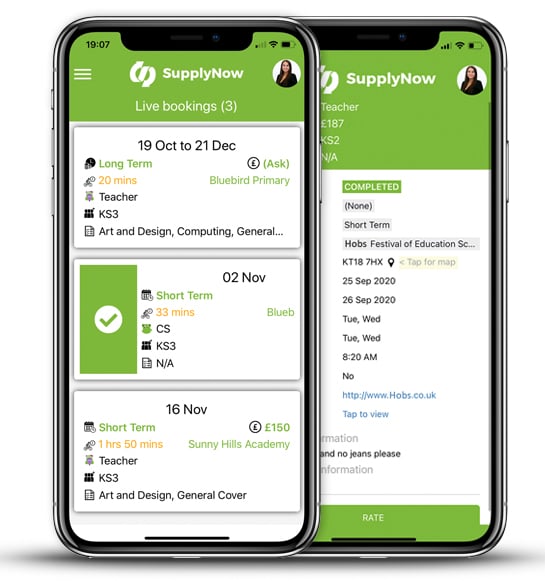One of my favourite things about teaching is planning a lesson that I know will excite and engage my students. I love it.
However, lesson planning should never take a lengthy amount of time for one good reason: you never know if it’s going to work.
Whether you’ve been with your students for a week, a month or even a year, their knowledge, or lack of knowledge about a subject will always be surprising.
With that in mind, you need to be able to plan quickly and be flexible.
Here are a few steps I take to ensure my lesson planning doesn’t take long, is effective in the classroom and easily adaptable if things don’t go quite as you thought.
Re-use everything
Never worry about repeatedly using an activity. In fact, I try to re-use the same activities as often as possible.
Of course, you could reinvent every lesson and try to make learning exercises different in the hope they’ll be even more interesting for the students; however, you’re not only wasting your time but also slowing down learning.
When you try a new activity, the first step is teaching that activity and the second is content.
If you do something your students are familiar with but change the content, they become more focused on the objective rather than learning how to do the activity.
With that in mind, try to repeat the same activities often enough that students know them, but not so much that they become boring.
Resources are everything
While I was growing up, my mum was a primary school teacher. Part of her weekly lesson planning was digging through giant boxes of photocopied resources to choose activities for her lessons. I remember asking her what she was doing, and she would say that in teaching, resources are everything.
Years later, when I became a teacher (it definitely runs in the family), I started to understand what she meant.
Make sure you save everything you do, share with colleagues and use online communities.
Back up your resources
With the developments of digital technology, it’s not necessary to have boxes and boxes of worksheets like my mum did; we can store everything on a USB or cloud drive.
However, it’s vital you make sure you have a backup. Losing all the lessons you’ve taught over the last two years because your USB stick corrupts or falls apart will cost you big time.
This isn’t really about saving time; it’s about not wasting the weeks it would take you to re-make everything.
Start with the question
Focusing my planning around a central question has saved me hours and made my lessons a lot tighter.
When I was training, the idea of aims or objectives always seemed a little bit abstract. Of course, you need to communicate the skills you’re teaching students, but basing that around the question they’re going to answer is much more tangible.
This objective could be an exam style question they’re working towards, or a more general question about the content you’re delivering. Being able to say, “by the end of the lesson/week/ term you’ll be able to answer this,” is an obvious and effective way to show them their progress.
Keep it simple
Teaching does not have to be complicated. Lessons do not require embedded video clips, background music or colour-coded extension tasks.
Some of the most effective lessons are very simple, focused purely on what students need to learn.
Independent work
Some teachers seem to be worried about leaving students to work on their own. I don't mean heading home halfway through a lesson, but students need to work independently to struggle, learn and persevere.
In every lesson plan, I leave about fifteen-minutes for independent work where students will not need my input. I do this for all students, regardless of ability. I think learning independence is sometimes as important as the content itself.
This can be difficult at first because they will want your help and reassurance that what they’re doing is right. But as students get used to it, you’ll have more time in which you can check their progress through live marking, ensure the lesson is going as you want it and make notes on what you need to do next time.
Teacher led is alright too
Finally, for secondary school teachers like me, a teacher led section of the lesson is fine too.
Of course, you can design exciting and engaging ways to deliver content to students, and although that's often great, it’s time-consuming, hard work and can distract students from what the lesson is actually about.
Sometimes standing at the front of the class, explaining a concept or talking through something they need to know before they go and apply it, is the best way to deliver content.
For thousands of years, people have learnt from each other by having something explained verbally. There’s nothing wrong with doing that tomorrow in your classroom.
Planning engaging and exciting lessons doesn’t need to take you ages. Save your energy to be the most vibrant and exciting person you can in the classroom, because that’s where it makes a difference.
About the Writer

Luke Richardson is an English teacher from Nottingham. He loves to write, blog and tell stories! Check out his debut novel, Kathmandu, and see his website for excellent teaching blogs and education resources.
Do you have a flair for writing? You could see your work featured on the SupplyNow blog just like Luke!
Email us on [email protected]






